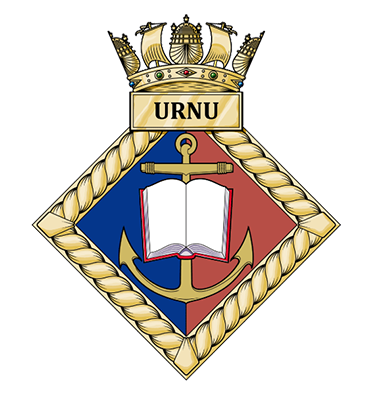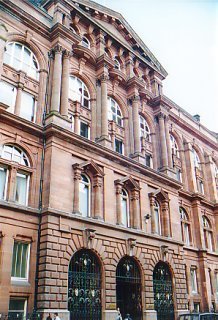|
Ford Class Seaward Defence Boat
The Ford-class seaward defence boats were built for the Royal Navy (with three built for the South African Navy) in the 1950s. Development They were designed to detect and attack hostile submarines, including midget submarines in inshore waters such as the approaches to large ports.Gardiner and Chumbley 1995, p. 536.Blackman 1971, p. 369. They were powered by diesel engines and were planned to be armed with a single barreled Squid anti-submarine mortar. This special version of the Squid was a failure however, with the first Ford-class boat, HMS ''Shalford'' being fitted with a normal three-barreled Squid and the remaining vessels with a more conventional anti-submarine armament of depth-charge throwers. A single Bofors 40 mm gun completed the armament. HMS ''Droxford'' served for a time as the tender for Glasgow and Strathclyde Universities Royal Naval Unit, and was administered by RNR Clyde. The vessel was used to train Midshipmen who were students of the universities ... [...More Info...] [...Related Items...] OR: [Wikipedia] [Google] [Baidu] |
Carrick Castle
Carrick Castle is a 14th-century tower house on the west shore of Loch Goil on the Cowal peninsula in Argyll and Bute, Scotland. It is located between Cuilmuich and Carrick, south of Lochgoilhead. The castle stands on a rocky peninsula, and was formerly defended to landward by a ditch and drawbridge. The building is around , and up to high with walls seven feet thick. It consists of two floors above the central great hall and stands 64 feet high. There is a curiosity – a small chimney is built into a window recess. There is an appendage of a smaller 17th Century structure to the original rectangular tower house. The structure has been designated a scheduled monument and a Category A listed building by Historic Environment Scotland. Modern-day houses in the surrounding area take the name Carrick Castle. History The castle was probably built by the Campbells in the last decades of the fourteenth century, at a point of time when the family was dominant in the area. It was ... [...More Info...] [...Related Items...] OR: [Wikipedia] [Google] [Baidu] |
Bofors 40 Mm Automatic Gun L/60
The Bofors 40 mm Automatic Gun L/60 (often referred to simply as the "Bofors 40 mm gun", the "Bofors gun" and the like, see name) is an anti-aircraft autocannon, designed in the 1930s by the Swedish arms manufacturer AB Bofors. The gun was designed as an intermediate anti-aircraft gun, filling the gap between fast firing close-range small calibre anti-aircraft guns and slower firing long-range high calibre anti-aircraft guns, a role which previously was filled by older outdated guns. The Bofors 40 mm L/60 was for its time perfectly suited for this role and outperformed competing designs in the years leading up to World War II in both effectiveness and reliability. It entered the export market around 1932 and was in service with 18 countries by 1939. Throughout World War II it became one of the most popular and widespread medium-weight anti-aircraft guns. It was used by the majority of the western Allies and some Axis powers such as Nazi Germany and Hungary. In the pos ... [...More Info...] [...Related Items...] OR: [Wikipedia] [Google] [Baidu] |
Patrol Vessels Of The United Kingdom
A patrol is commonly a group of personnel, such as law enforcement officers, military personnel, or security personnel, that are assigned to monitor or secure a specific geographic area. Etymology From French ''patrouiller'', from Old French ''patouiller'' “to paddle, paw about, patrol”, from ''patte'' “a paw”. Military In military tactics, a ''patrol'' is a sub-subunit or small tactical formation, sent out from a military organization by land, sea or air for the purpose of combat, reconnaissance, or a combination of both. The basic task of a patrol is to follow a known route with the purpose of investigating some feature of interest or, in the assignment of a ''fighting patrol'' (U.S. ''combat patrol''), to find and engage the enemy. A patrol can also mean a small cavalry or armoured unit, subordinate to a troop or platoon, usually comprising a section or squad of mounted troopers, or two armoured fighting vehicles (often tanks). Law enforcement ... [...More Info...] [...Related Items...] OR: [Wikipedia] [Google] [Baidu] |
Nigerian Civil War
The Nigerian Civil War (6 July 1967 – 15 January 1970), also known as the Nigerian–Biafran War or the Biafran War, was a civil war fought between Nigeria and the Republic of Biafra, a secessionist state which had declared its independence from Nigeria in 1967. Nigeria was led by General Yakubu Gowon, while Biafra was led by Lieutenant Colonel C. Odumegwu Ojukwu, Chukwuemeka "Emeka" Odumegwu Ojukwu. Biafra represented the nationalist aspirations of the Igbo people, Igbo ethnic group, whose leadership felt they could no longer coexist with the Federal government of Nigeria, federal government dominated by the interests of the Muslim Hausa-Fulanis of Northern Nigeria. The conflict resulted from political, economic, ethnic, cultural and religious tensions which preceded the United Kingdom's formal decolonization of Nigeria from 1960 to 1963. Immediate causes of the war in 1966 included 1966 Nigerian coup d'état, a military coup, 1966 Nigerian counter-coup, a counter-coup, and 19 ... [...More Info...] [...Related Items...] OR: [Wikipedia] [Google] [Baidu] |
Biafra
Biafra, officially the Republic of Biafra, was a partially recognised secessionist state in West Africa that declared independence from Nigeria and existed from 1967 until 1970. Its territory consisted of the predominantly Igbo-populated former Eastern Region of Nigeria. Biafra was established on 30 May 1967 by Igbo military officer and Eastern Region governor C. Odumegwu Ojukwu under his presidency, following a series of ethnic tensions and military coups after Nigerian independence in 1960 that culminated in the 1966 massacres of Igbo people and other Eastern ethnic groups living in northern Nigeria. The military of Nigeria proceeded to invade Biafra shortly after its secession, resulting in the start of the Nigerian Civil War. Biafra was formally recognised by Gabon, Haiti, Ivory Coast, Tanzania, and Zambia. Other nations, which did not officially recognise Biafra, but provided diplomatic or military support to Biafra, included France, Spain, Portugal, Norway, Israel, ... [...More Info...] [...Related Items...] OR: [Wikipedia] [Google] [Baidu] |
Royal Ceylon Navy
ta, இலங்கை கடற்படை , image = Sri Lanka Naval Seal.png , image_size = 180px , caption = Emblem of Sri Lanka Navy , dates = , country = , branch = , type = Navy , role = Naval warfare , size = 48,000 , anniversaries = Navy Day: 9 December , equipment = , start_date = , command_structure = Sri Lanka Armed Forces , decorations = ''Military awards and decorations of Sri Lanka'' , website = , commander1 = President Ranil Wickremesinghe , commander1_label = Commander-in-Chief , commander2 = Vice Admiral Nishantha Ulugetenne , commander2_label = Commander of the N ... [...More Info...] [...Related Items...] OR: [Wikipedia] [Google] [Baidu] |
List Of Decommissioned Ships Of The South African Navy
The following is a list of decommissioned ships of the South African Navy. Pennant numbers South African Navy used the below pennant number prefix designations: * A — auxiliaries * C — cruisers * D — destroyers * F — frigates * H — shore signal stations (military); survey vessels * K — miscellaneous vessels * L — amphibious warfare ships * M — minesweepers * N — minelayers * P — patrol boats * R — aircraft carriers * S — submarines * T — trawler (converted: WWII) * Y — yard vessels 1944 change to pennant numbers South African Navy vessels pennant numbers T01-T62 used numbers that were duplicated with the Royal Navy. In 1944 South African Navy vessel pennant numbers were changed to eliminate this duplication. 500 was added to pennant numbers T01-21, 440 was added to pennant numbers T22-39 and 400 was added to numbers T40-61. Thus as an example, T40 became T440 and T05 became T505. In the below tables, pennant numbers in parenthesis indicate the revise ... [...More Info...] [...Related Items...] OR: [Wikipedia] [Google] [Baidu] |
Kenyan Navy
The Kenya Navy is the navy, naval branch of the Kenya Defence Forces. It is headquartered in Mombasa. Kenya Navy has two major bases for its fleet with it being headquartered in Mtongwe Naval Base, Mombasa and Manda Bay (part of Lamu Archipelago) being the second naval base. The navy also operates naval stations in Shimoni, Msambweni, Malindi and Kilifi. The Kenya Navy fleet is organized into two fighting squadrons and a logistical support squadron, namely the pioneer 66 Squadron, the 76 Squadron and the 86 Squadron all supported by a Special Operations Squadron, the Fleet Maintenance Unit and a newly formed elite Marine Ranger Regiment. History As Great Britain wound down her colonial control in East Africa, the Royal East African Navy (REAN) was established in 1953, covering Kenya Colony, Tanganyika (territory), Tanganyika and Zanzibar. Following the disbanding of the REAN in 1962, the East African Railways and Harbours Corporation assumed control of naval operations in the ... [...More Info...] [...Related Items...] OR: [Wikipedia] [Google] [Baidu] |
University Royal Naval Unit
The University Royal Naval Units (URNU) ( , less commonly ) (formerly Universities' Royal Naval Units) are Royal Navy training establishments who recruit Officer Cadets from a university or a number of universities, usually concentrated in one geographical area. There are 17 URNUs in the UK, with each URNU having land-based facilities near the universities they recruit from, with the exception of URNU Virtual, whose drill nights are conducted virtually. Each unit has an affiliated P2000 ship, which is used for training Officer Cadets when not on duty with the Coastal Forces Squadron. Units URNU ships are part of the Coastal Forces Squadron, or "CFS". CFS is commanded by Commander CFS, who previously was also Commander URNU, Commander Universities now being a separate post. The mission statement of CFS is to provide high-quality sea training experiences in support of the URNU mission and to deliver P2000 operational capability in support of other fleet tasking. Histo ... [...More Info...] [...Related Items...] OR: [Wikipedia] [Google] [Baidu] |
University Of Strathclyde
The University of Strathclyde ( gd, Oilthigh Shrath Chluaidh) is a public research university located in Glasgow, Scotland. Founded in 1796 as the Andersonian Institute, it is Glasgow's second-oldest university, having received its royal charter in 1964 as the first technological university in the United Kingdom. Taking its name from the historic Kingdom of Strathclyde, it is Scotland's third-largest university by number of students, with students and staff from over 100 countries. The institution was named University of the Year 2012 by Times Higher Education and again in 2019, becoming the first university to receive this award twice. The annual income of the institution for 2019–20 was £334.8 million of which £81.2 million was from research grants and contracts, with an expenditure of £298.8 million.. History The university was founded in 1796 through the will of John Anderson, professor of Natural Philosophy at the University of Glasgow, who left i ... [...More Info...] [...Related Items...] OR: [Wikipedia] [Google] [Baidu] |



